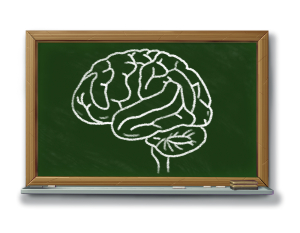 Dr. Daniel J. Siegel’s book Brainstorm is good for parents, adolescents, and teachers. His book is fairly easy to read and he even provides a handy acronym to help us remember the essence of this thesis. EsSeNCe is his memory device of choice, and it stands for 1) Emotional Spark, 2) Social Engagement, 3) Novelty Seeking, and the subject of this blog, 4) Creative Explorations. All four of these impulses within the adolescent psyche must be explored for the young brain to undergo integration of all its sectors. Integration is necessary for a healthy, productive, mature, and hopefully happily functioning adult brain.
Dr. Daniel J. Siegel’s book Brainstorm is good for parents, adolescents, and teachers. His book is fairly easy to read and he even provides a handy acronym to help us remember the essence of this thesis. EsSeNCe is his memory device of choice, and it stands for 1) Emotional Spark, 2) Social Engagement, 3) Novelty Seeking, and the subject of this blog, 4) Creative Explorations. All four of these impulses within the adolescent psyche must be explored for the young brain to undergo integration of all its sectors. Integration is necessary for a healthy, productive, mature, and hopefully happily functioning adult brain.
Many people might look at these four important factors to understand teenage impulses and think that creative exploration is the easiest one for a teacher to hit in the classroom. In this day and age of standardized testing and even teacher evaluations being based on test scores, many teachers resort to a more clear, direct route, to higher test scores, and simply don’t want to risk taking too much time on creative exploration; sad yes… but true, indeed.
“Out of the box” thinking should be more than a nice way of saying, “Good job finding an alternative solution kid, just make sure the answer’s right,” for it is literally how a teenager’s brain is designed to address problems. “An adolescent’s new conceptual thinking and abstract reasoning allow questioning of the status quo, approaching problems with “out of the box” strategies, the creation of new ideas, and the emergence of innovation” (pg. 9). Try and ponder our primitive ancestors, and the quest for fire. How radical it must have been for a young cave dweller to try to start her own fire (Fire by Hand Drill) instead of just focusing on preserving it, as generations had done before?
The fear of creative expression comes from its existential downside. Not following the status quo, by definition, has to come with some feeling of isolation, sometimes feeling totally different from the world around us. The existential crisis started for me in early adolescence, and I thank all that is good in the universe for the avenues of journaling and creative writing that I found. Writing, art with words, stayed with me long after my crisis peaked in my twenties. “Searching for the meaning of life during the teen years can lead to crisis of identity, vulnerability, to peer pressure, and a lack of direction and purpose” (pg. 9). The existential crisis is not exclusive to brooding writers who wear berets and consume mass amounts of caffeine, it is part of being between the ages of twelve and twenty-four.
What is the benefit of this creative impulse? Fire! Light! Innovation! “If the mind can hold on to thinking and imagining and perceiving the world in new ways within consciousness, of creatively exploring the spectrum of experiences that are possible, the sense of being in a rut that can sometimes pervade adult life can be minimized and instead an experience of the “ordinary being extraordinary” can be cultivated” (pg. 9).
As a classroom teacher, I see creative expression manifest productively when I build in more voice and choice. My school utilizes a combination of project based learning along with Expeditionary Learning protocols. Many of our projects culminate in a public exhibition. When their five paragraph essays are done, the safe route for me is to give them strict guidelines for a night of monologues, or even how to utilize them in a debate format. The risky part for me as an educator, but the part that really promotes creative expression, is to simply ask the kids how they want to do it.
I give them the goal, perhaps to demonstrate the differences between government systems, and then the rest is up to them. It’s extremely important to give ample time for brainstorming, plans that get approved, and performance or demonstration practice. This can look different for different grade levels, but the essence of creative expression is the same; “I know you have brilliant ideas about what we are learning, ones that may be different from mine, and that’s why I’m interested in your creative expression.”
The possibilities that can come out of this aspect of bringing adolescent brain science into your classroom are far-reaching, and can truly harness the deep feelings that come with the sometimes lonely, and often remarkable, creative aspects of the adolescent maturation process.
Nicholas Philliou, 7th grade humanities teacher in Durango, Colorado
Image Credit: Lightspring / Shutterstock.com













This is a great article in applying brain science to teaching. It is inspiring to see! With the fullness of your approach, kids who have you as a teacher are quite lucky. I also appreciated you acknowledging the realities of the difficulty for educators in regards to testing. It seems like you are finding some balance in this way and I appreciate you sharing this with other educators.
Thank you so much for your comments. I will let the author of the article know about what you shared. Thank you again for stopping by and taking the time to share your thoughts.